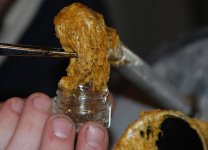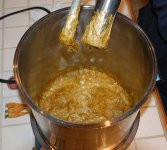Those 2 valves add around $300 cost if using 1/2" ones (Swagelok SS-RL4M8F8, Swagelok SS-8CPA2-50) not including the additional holding tank, if there are other more cost effective solutions for preventing psi levels from going over 100 I would be interested. Is a gauge and cracking the vapor valve to release pressure not sufficient?
Yeah, expensive aren't they?
The most cost effective way to keep pressure under 100 psi is to operate the equipment properly, and it will never come close to 100 psi.
ASME boiler code, Section VIII requires pressure relief.
While you can personally make that call for your own use, I can't market an unprotected pressure vessel and afford liability insurance or staying out of jail if someone gets seriously hurt.
Here is some information on alternatives. We've tried rupture discs instead, but they oil canned under alternating vacuum and pressure, eventually causing a failure.
https://www.irc.wisc.edu/file.php?id=172




